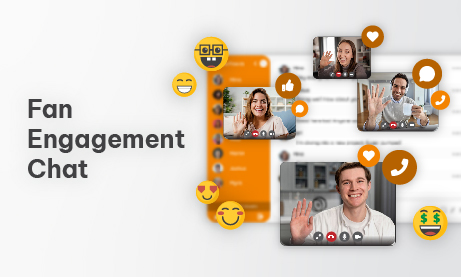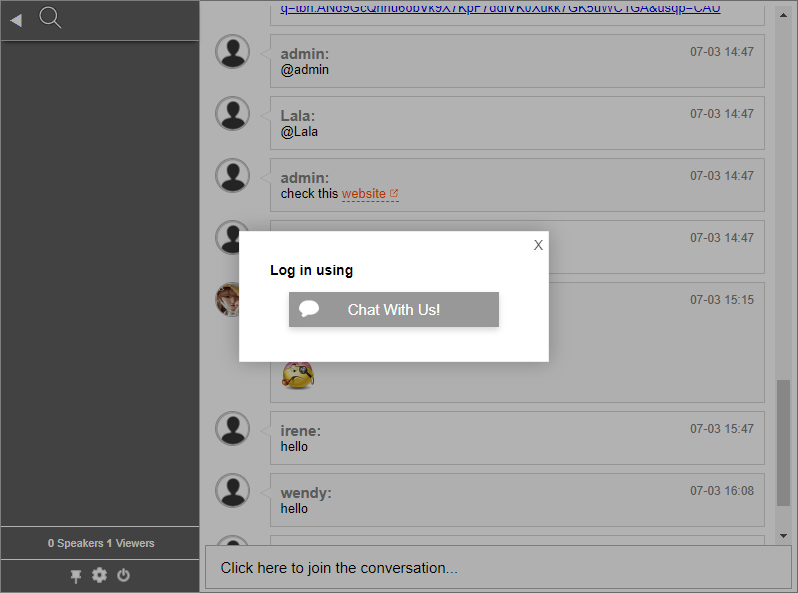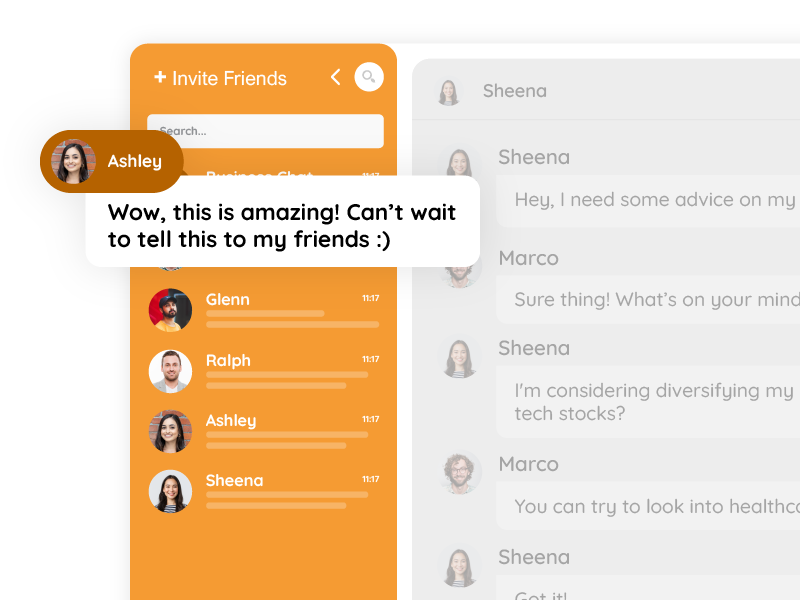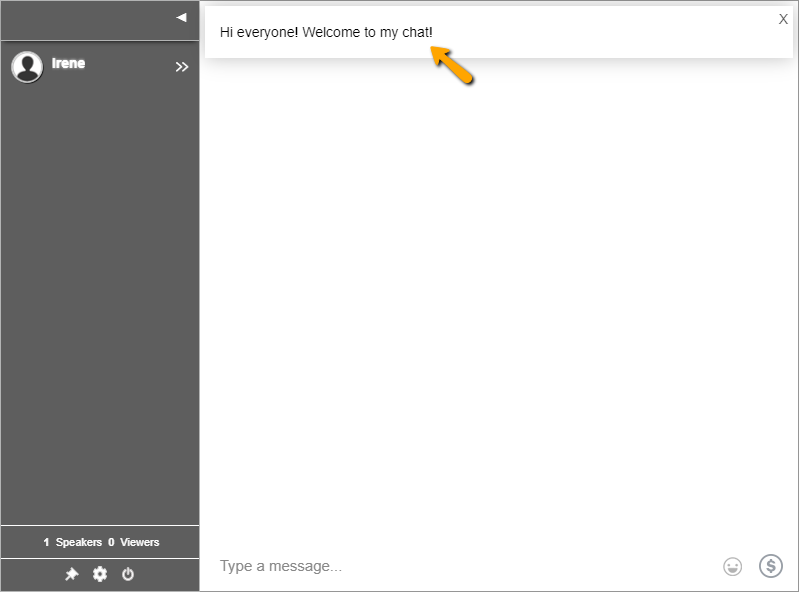In an age where digital interactions often shape the most meaningful connections between creators, brands, and their audiences, fan engagement chat solutions have emerged as powerful tools. These real-time communication platforms allow fans to converse with content creators, live-streamers, podcasters, or event hosts in a direct, interactive format. As fan engagement grows more sophisticated, the guest login feature stands out as a simple yet impactful approach to lowering barriers to entry, increasing participation, and amplifying community spirit.
Below, we explore why fan engagement chat is more relevant than ever, how guest logins enhance participation, and the best practices for incorporating them into your online community or live event strategy.
1. The Rising Importance of Real-Time Fan Interaction
1.1 The Need for Authenticity
Fans crave authentic, unfiltered conversations with the people or brands they admire. This desire for real-time engagement propelled the popularity of platforms like Discord, Twitch, and Twitter Spaces—where spontaneity and community-driven discussion add depth to mere content consumption. Embeddable fan engagement chat on websites or branded platforms take this a step further, ensuring creators own the conversation space and can tailor the experience to their community’s needs.
1.2 Building Emotional Connections
Unlike traditional, one-directional communication (e.g., posting comments on a static forum), real-time chat fosters emotional connections. When fans see their message read and answered by a creator—or even recognized by fellow community members—they feel valued. This sense of belonging often translates into loyalty, word-of-mouth promotion, and even direct support through subscriptions, donations, or merchandise purchases.
2. Guest Logins: Lowering Barriers, Elevating Engagement
2.1 What Are Guest Logins?
A guest login (sometimes referred to as a “visitor login” or “anonymous login”) is a simplified entry method that allows users to join a chat without creating a permanent account. Instead, they can pick a temporary username or automatically receive a system-generated handle. Once they leave the chat or close the session, the guest profile either disappears or remains active only for a limited time.
2.2 The Value of Guest Access
- Reduced Friction: One of the biggest reasons users hesitate to engage is the time and effort required to create or verify accounts. When your chat application supports guest logins, new fans can jump into the conversation immediately—no lengthy registration or email confirmations.
- Inclusive Community: By welcoming users in a single click, you signal that everyone is invited. This inclusive atmosphere attracts shy newcomers or those who are short on time. Over time, these users might convert into full-fledged members or paying subscribers once they find value in the community.
- Impulse Engagement: Particularly during livestreams or timed events, fans often act on impulse. They have a sudden question or reaction they want to share. A guest login option capitalizes on these spontaneous moments, ensuring minimal friction for real-time commentary.
- Increased Traffic and Participation: Events tend to garner larger audience numbers when people know they can pop in and participate without a multi-step account process. A robust influx of guest participants can enliven discussions, offering creators more opportunities to engage and demonstrate community vibrancy.
3. Implementing Guest Logins in Fan Engagement Chat
3.1 Technical Considerations
- Guest Username Generator
An automated system can generate random handles for guests (e.g., “Guest1234,” “BlueFan42”). While some platforms allow guests to choose a custom display name, always have a fallback generator to maintain continuity and prevent multiple users from adopting the same name. - Session Management
Decide how long a guest session lasts—until the user closes the page, or perhaps for 24 hours. This helps manage clutter, prevents old guest profiles from persisting indefinitely, and lets new viewers enter without conflicting identities. - Security Layers
Even if guest logins skip email verification, your platform should include basic spam filters or captcha checks. This is crucial for protecting live chats from bots, trolls, or malicious actors. Another practice is to limit the frequency of guest messages within a specific timeframe to curb spam.
3.2 Balancing Guest Freedom and Moderation
Guest participants can invigorate discussions, but they can also invite unwanted behaviors if not moderated effectively. Here are some strategies:
- Moderation Dashboard
Provide moderators with an easy interface to mute, ban, or flag guest users if they violate community standards. Quick, intuitive moderation tools maintain the quality of conversations without overly policing genuine fans. - Transparent Guidelines
Establish clear chat rules at the outset. Pin them in the chat window or display them in a popup upon entering. This sets expectations for respectful engagement and deters disruptive behavior. - Gradual Access for Repeated Guests
Some platforms offer tiered privileges—guest users can post text messages but need to register for advanced features like uploading images, sharing links, or participating in polls. This helps build trust and encourages frequent guests to transition into registered members.
4. Showcasing Examples of Guest Login Success
4.1 Live Music Festivals
When an independent music festival hosts a livestream, audience members worldwide may tune in spontaneously. Guest login chat ensures fans can react, request shout-outs, and network with fellow music lovers instantly. The lively atmosphere can draw in more participants, driving social media chatter that further boosts audience numbers.
4.2 Sports Watch Parties
Sports fans often gather online to watch big games together. By embedding a guest login chat on a team’s official site or a fan page, hosts can spark real-time reactions during crucial plays. Fans who pop in just to see a game’s final minutes can easily comment or celebrate with others—no account or email needed.
4.3 Podcast Q&A Sessions
Podcasters sometimes offer live Q&A sessions where fans type questions during the broadcast. With a guest login option, even casual listeners who discovered the podcast that same day can jump right into the conversation. This frictionless process can convert one-time listeners into long-term supporters because they receive direct interaction with the host.
4.4 Nonprofit Fundraisers
Online charity drives, telethons, or educational seminars see spikes in public interest at unpredictable times. A moderated chat with guest access lets donors or curious viewers share immediate feedback, ask about donation logistics, or show support for the cause. These fleeting moments of interest are crucial; guest-friendly chat ensures potential donors don’t drop off due to cumbersome sign-up flows.
5. Monetization Possibilities with Guest Logins
While monetizing guests may sound contradictory—given that they haven’t formally committed to the community—there are still ways to turn these casual visitors into financial supporters:
- Upsell Full Membership
After a guest participates a few times, prompt them with a gentle pop-up: “Love chatting with us? Sign up for full membership to gain access to exclusive emojis, VIP chat lounges, or archived discussions.” This approach can be highly effective when guests already see the value in being part of the community. - One-Time Purchases
Even if users remain guests, they can still contribute via tips or micropayments. For instance, some platforms implement a “tip jar” or “gift” function, allowing a quick credit card or PayPal donation without requiring registration. This is often used on live streams, where fans can “buy a coffee” for the creator or donate during a special event. - Sponsored Engagement
For larger fan communities, brands might sponsor chat segments or pay for pinned messages. Guest participants will still see these, creating opportunities for advertising revenue. As long as it’s done tastefully, it can coexist with a frictionless guest experience.
6. Best Practices for a Smoother Guest Login Experience
6.1 Clear User Interface
A well-designed UI ensures visitors instantly see how to join as a guest. Buttons labeled “Join Chat as Guest” or “Start Chat Now” should be visually prominent. Avoid burying the guest login option under multiple steps or disclaimers.
6.2 Welcome Messages
Upon a new guest entering the chat, an automated welcome message can greet them, briefly outline chat rules or tips, and perhaps encourage them to introduce themselves. This immediately warms up the space and reduces confusion about next steps.
6.3 Highlight Community Value
Encourage guests to return by making it clear why the community matters. Pin upcoming event schedules, mention how often the creator responds to questions, or showcase notable community-driven initiatives. When guests see that people in chat regularly share interesting insights or direct access to the host, they’ll have more incentive to become repeat visitors or convert into registered users.
6.4 Follow-Up Emails or Notifications (When Applicable)
If your platform allows a “light registration” (e.g., guests enter an optional email for special perks), sending a follow-up can keep them engaged. A simple email thanking them for participating and hinting at upcoming events can transform a one-time guest into a consistent fan. This approach, however, must always comply with privacy and anti-spam guidelines.
7. Fan Engagement Beyond the Chat
While a guest-enabled chat can supercharge immediate interaction, the broader goal is to create a multifaceted fan experience that resonates long after a session ends. Here are complementary strategies:
- Archival Content
Publish highlights from chat sessions—like interesting questions or creator responses—to maintain momentum. This record can persuade later visitors to join future chats. - Social Media Teasers
Share short clips of chat-based interactions on social platforms (e.g., a funny or insightful exchange) to entice more viewers into your next livestream chat. Emphasize that anyone can join instantly as a guest. - Tiered Community Access
Develop a structure where advanced fans can register for deeper benefits (private chat rooms, exclusive meet-and-greets, or early access to content). Guest logins often serve as the “entry funnel” for these premium tiers. - Collaborations and Specials
Partner with other creators or complementary brands to co-host chat events. With guest logins, cross-pollination becomes easier—fans from both sides can pop in with minimal hassle. This synergy amplifies overall reach.
How a Fan Engagement Chat Makes All the Difference
In a crowded digital landscape where attention spans are short, a fan engagement chat with guest login can be the difference between a quiet livestream and an electric event filled with excited participants. By removing hurdles, you invite impulse engagement, foster inclusivity, and create a real sense of community for fans who might otherwise remain passive viewers.
Additionally, a well-implemented guest login approach opens up monetization avenues and becomes a gateway for deeper fan relationships. Whether you’re a musician hosting virtual concerts, a podcaster running live Q&As, or a brand ambassador organizing watch parties, guest-friendly chat systems can elevate your audience interaction to new heights.
Ultimately, fan engagement is about forging emotional connections that last beyond one event or campaign. Guest logins catalyze those connections, ensuring that the very first step—joining the conversation—is as smooth and inviting as possible. By combining simple, unobtrusive entry points with robust moderation, security, and a clearly defined community spirit, you can cultivate a lively, loyal fanbase that returns again and again to be part of the conversation.





